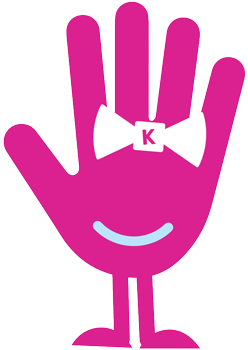Understanding Tongue Tie: Implications, Diagnosis, and Treatment
Most babies have a visible frenulum. A frenulum is a piece of connective tissue under the tongue, holding it to the floor of the mouth. Some frenulums are anterior (connecting most of the tongue to the floor of the mouth), and some are posterior (connecting the back half of the tongue or less). Some frenulums are short, preventing tongue mobility, and some are long, allowing movement. Most healthcare practitioners notice the anterior tongue ties because they are visible when a baby cries or opens their mouth. The posterior frenulums are harder to see and require a proper tongue lift to view. A tongue tie is present when the frenulum, whether anterior or posterior, long or short, preventing the tongue from moving as it should.
How can you tell if your baby has a tongue tie? What are tongue tie symptoms?
The best way to tell whether your baby has a tongue tie is to see a pediatrician or lactation consultant who can assess whether the tongue is moving as it should. A proper assessment entails watching a breastfeed to examine the latch and checking for suction on a finger, lift upwards and side-to-side mobility. Some babies cannot move their tongue past the gums. This can cause trouble breastfeeding. This is a tongue tie.
There are also some clues you can look out for as a parent. For example, the tongue must move a lot to hold onto the breast and remove milk. When the tongue cannot do these movements, other parts of the mouth take over, causing a variety of symptoms. This can present itself as nipple pain, long breastfeeds, short/inefficient breastfeeds, recurring blocked ducts, fussy when latching or during breastfeeds, difficulty with fast flow/letdown, excessive gas, clicking or slipping of the breast during feedings or unable to latch on the breast without a nipple shield/in general. If you noticeg any of these symptoms, taking your baby in to get assessed for tongue tie makes sense.
How is tongue-tie diagnosed?
A physician and lactation consultant can review your child’s tongue movement and diagnose tongue tie through an examination. An anterior tongue tie can make the tongue look heart-shaped, as the frenulum may be to the tongue tip. A posterior tongue tie ankyloglossia will be less obvious but could still affect a baby’s feeding and even a child’s speech as they grow older. Some older children with tongue ties will struggle with certain sounds, tooth decay, and even eating an ice cream cone! The tongue should be able to move up and down to the roof of the mouth and the floor of the mouth. We expect movement of the tongue past the gums at least, but also up and down. Even posterior tongue ties may have trouble moving this way. A tongue tie can cause difficulty lifting, leading to breastfeeding problems and challenges moving breast milk from the mom.
What is tongue tie treatment?
A tongue tie release (or frenectomy) is a minor procedure. During the procedure, the tongue tie or frenulum is removed. At Kidcrew, the procedure is performed by a pediatrician with a pair of sterile scissors and the help of a lactation consultant. The procedure itself takes 2-4 seconds. Most babies under two months of age cry for 1-2 minutes, then calm once latched and drinking well from the breast. Some babies are a little fussy for the rest of the day, but most seem unaffected. At Kidcrew, the lactation consultant is there to help calm the baby and help your baby latch afterwards. Many families notice an improvement in the latch right away, and others see the improvements after 3-7 days, depending on the symptoms and the baby’s age. A follow-up appointment is suggested in one week to make sure tongue mobility has improved. Typically improvements are seen sooner when babies are under one month. Older babies have been compensating for the lack of tongue mobility for longer and often take longer to improve because of muscle memory and a buildup of muscle tension.
When is the best time to get a tongue tie release?
Babies who have been compensating for lack of tongue mobility most often need bodywork before and after the tongue tie release. If they have been using their lips, jaw and or cheeks to hold onto the breast, they often have tight muscles in these areas and the surrounding muscles. The bodywork suggested is a very gentle light touch from an Osteopath, Paediatric Chiropractor, Physiotherapist or Cranial Sacral Therapist. The touch is so light (5 grams of pressure) because they are working on releasing tight fascia. Fascia is the connective tissue that runs throughout our body in a web-like material wrapping our muscles and organs. When tight fascia is released, the muscles it wraps can relax and begin to function well. Unfortunately, muscles wrapped in tight fascia are often weak and don’t function well. Hence, a frenectomy will not necessarily lead to a good functioning tongue if the muscles in the upper body are tight.
The Lactation Consultants at Kidcrew always do a full body check of your baby to look out for areas of tension. If they notice a baby with obvious tension, the suggestion is usually to do bodywork first before a tongue tie release is considered. Then, a list of preferred practitioners would be provided to the family. The bodyworker should then decide when the baby’s body is ready for the frenectomy (usually after 1-2 sessions).
Another situation when a baby is not ready for a tongue tie release is when they are not latching on the breast. If a tongue tie release is performed and the baby has never latched or had a positive experience drinking well from the breast, they may never latch. It’s best to work with a Lactation Consultant first to help teach the baby how to latch (and the family). Then, if the latch and or transfer of milk is not optimal, a tongue tie release may be suggested and performed.
One of the best post-tongue tie-release exercises for babies is breastfeeding. Babies who are mostly bottle-fed tend not to use their tongues as much during feeding. At Kidcrew, during follow-up appointments, we often see reattachment of the tongue tie if a baby has been mostly bottle feeding. Reattachment is a term used when it appears the tongue tie has grown back. This is another reason it’s best to get the baby breastfeeding before a tongue tie release.
Why Doctors Recommend A Tongue Tie Release Procedure for Tongue-Tie
- Cost Considerations: It’s Free! A procedure by a physician is covered by Ontario’s OHIP, making it a cost-effective option without out-of-pocket expenses.
- Significant Breastfeeding or Bottle Feeding Issues: If your baby struggles with latching or feeding, resulting in poor weight gain, a tongue tie release can effectively address these issues.
- Follow-Up Care: Easy and Quick Follow-Up: At Kidcrew, a multidisciplinary clinic, follow-up appointments are convenient and typically available the same day, ensuring continuous care and monitoring.
What to Consider with Laser Surgery for Tongue-Tie
- Cost Considerations: Potential High Cost: Laser surgery can cost up to $1500 or more, as it is not covered by OHIP.
- Short and long-term benefits: Long-term benefits compared to surgical intervention are still debated among professionals. At this time, there is no evidence that laser-based tongue tie releases are less painful, more effective or provide a higher success rate than procedures by scissors.
- Specific Recommendations from a Specialist: If a dental specialist specifically recommends laser surgery for your child’s condition, it may be worth considering, but ensure you weigh this advice against that of a pediatrician.
- Availability of Equipment and Expertise: Laser treatments require specialized equipment and training, which might not be as readily available or reliable as pediatric surgical options.
- Follow-Up Care: Potential Wait Times: Follow-up at a dental office often requires a referral and can involve significant wait times, which may delay necessary post-procedure monitoring and care.
What to expect after a tongue tie release
At Kidcrew, we suggest you start to post tongue tie exercises the following day after the procedure. There will be a wound in the centre underneath the tongue where their tongue tie was. It will turn white or yellow – this is a scab. Usually, the scab goes away in 1-2 weeks. The exercises and breastfeeding as often as possible should get the tongue moving and functioning well. With good tongue mobility and function, the symptoms of the tongue tie should subside, and breastfeeding should become a more enjoyable experience.
Taking the Next Steps for Your Child’s Health
Tongue-tie can significantly impact a child’s ability to feed and speak properly. Recognizing the symptoms and understanding when to seek professional help is crucial. If you suspect your child has tongue-tie, consult with your pediatrician to explore the best treatment options. At Kidcrew, our experienced team is here to provide the care and guidance your child needs. Book a consultation with one of our pediatricians today to ensure your child’s health and well-being.
Not a patient at Kidcrew? Not a problem!
Book a same-day urgent care visit (covered by OHIP), and our pediatrician on duty will provide the guidance your child requires.






































